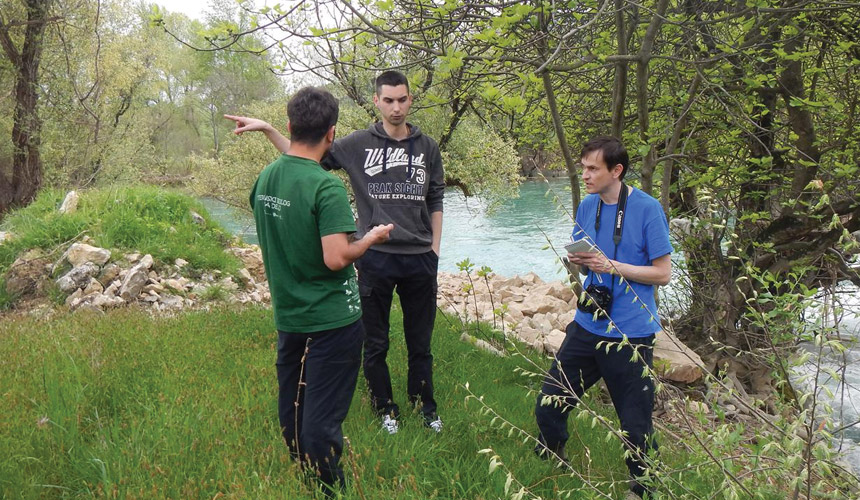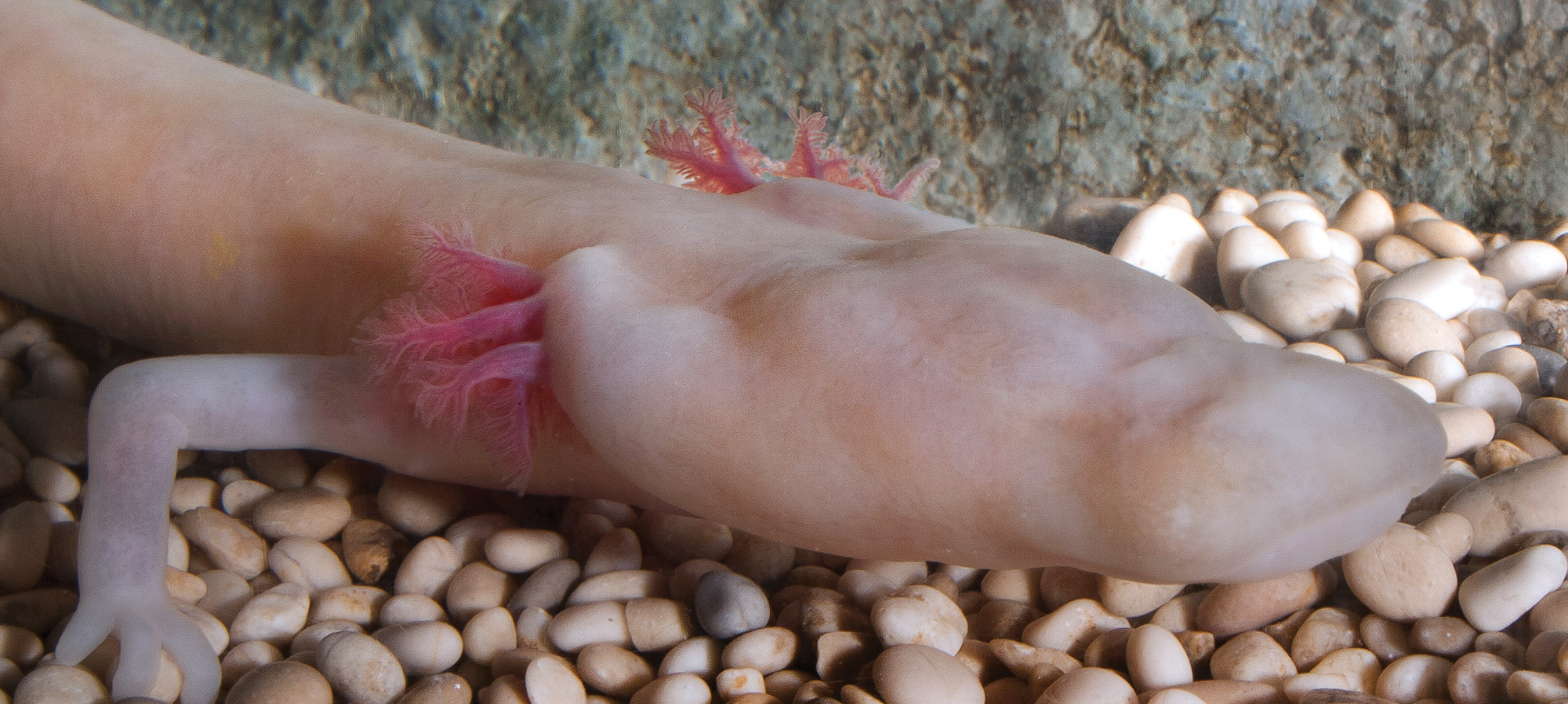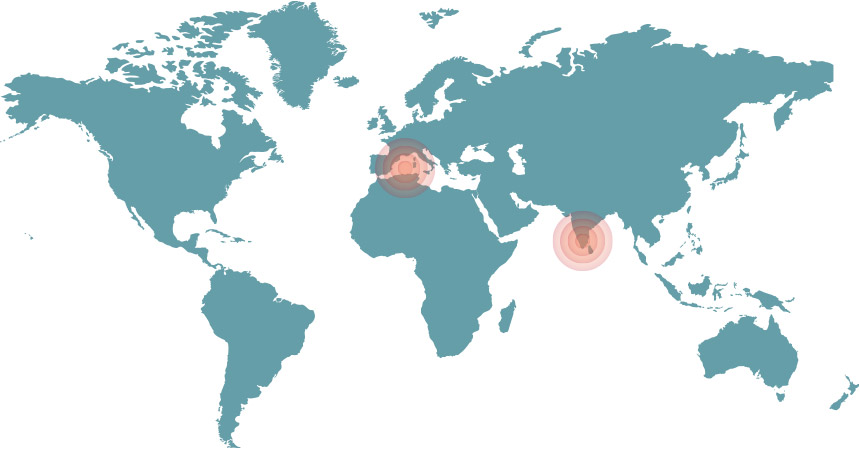Safeguarding species and securing critical natural resources
Too often people see vultures as they relate to death. But we relate them with life. They help protect our life system.
Biodiversity conservation is the core of CEPF’s work. The amazing array of species in the world’s biodiversity hotspots has an intrinsic value, but is also critical to maintaining healthy ecosystems that people rely on for resources such as pollination, fresh water and energy. All native species have a role to play—even those that are not cute and furry.
Mediterranean Basin Biodiversity Hotspot

A team of CEPF-funded scientists are using an innovative technique to track a mysterious species in the Balkan Peninsula whose presence is a sign of freshwater quality.
Olms (Proteus anguinus) are 30-centimeter-long unpigmented salamanders, the largest exclusively cave-dwelling animal on Earth. Though rarely seen, this species has long symbolized environmental harmony and good fortune to people of the Balkans.
Olms’ dependence on clean water has also turned these amphibians into important indicators of ecosystem health. When unregulated urbanization, intensive agriculture, and hydroelectric energy production began to negatively impact groundwater quality, the already elusive olms began a dramatic decrease in number, earning them a place on the IUCN Red List of Threatened Species and priority under the Bern Convention on the Conservation of European Wildlife and Natural Habitats.
Conservation of olms “should become an important issue directly related to public health,” said Gregor Aljancic of CEPF grantee Društvo za Jamsko Biologijo (in English, the Society for Cave Biology, or SCB), noting that the species depends on the same clean springs that many European cities depend upon for drinking water. “With pollution of groundwater we poison ourselves.”
Considering that olms shed skin cells in water where they live, SCB and its partners pioneered a new method that uses environmental DNA (eDNA) to track the occurrence of those skin cells in caves and karst springs. Their search for olms in Slovenia, Montenegro, and Bosnia and Herzegovina revealed the presence of olms in nine verified new localities, and identified 11 plausible sites. The project marks the first time eDNA has been successfully used in subterranean monitoring.
In addition to improving the tracking of the olms, SCB engaged with local communities to raise awareness about the importance of the natural areas that support the olm and provide fresh water to people. Educational leaflets were distributed, informational billboards were put up, and a lecture tour was held, all focusing on water management methods, threats to groundwater, and the role that olms play in the future of the region’s water resources.
Western Ghats and Sri Lanka Biodiversity Hotspot

Vultures play an important role in many ecosystems around the globe, where their scavenging habits help prevent the spread of disease from animal carcasses to wildlife, livestock and humans alike. When an anti-inflammatory drug called diclofenac hit the market in the mid-1990s, vultures began dying in huge numbers in India, with some species dwindling to less than 1 percent of previous populations. Research revealed that the drug, which was being used on livestock, is deadly to birds that feed on deceased livestock, resulting in the die-off of vultures.
“Vulture conservation is an absolute necessity,” said S. Bharathidasan, secretary of Arulagam, an Indian-based CEPF grantee working on solutions to the vultures’ decline.
India banned the veterinary use of diclofenac in 2006, but vulture populations in the country have struggled to rebound. Arulagam, with the guidance of Tamil Nadu State Forest Department and the support of eight partnering NGOs and government agencies, has been implementing a recovery plan for vultures in Tamil Nadu State, including the creation of a working plan for vulture conservation within the Nilgiri North Forest Division. A similar agenda was woven into the management plan for the Mudumalai Tiger Reserve in 2015, and Tamil Nadu State Forest Department began leaving disease-free and diclofenac-free wild animal carcasses out for the scavengers. Local governments in the Coimbatore, Erode and Nilgiri districts also helped create a vulture-safe zone of more than 100 square kilometers by declaring their villages diclofenac free.
Arulagam and its partners successfully advocated for the drug to be available for human use by prescription only, and encouraged retailers to only sell it in smaller, human-sized doses to prevent its use in veterinary medicine. Government drug inspectors have conducted a number of raids to discourage black marketeering.
Engaging with local communities, including youth, through activities like puppet shows and a volleyball tournament, has helped raise local awareness and appreciation for vultures. Community members have been converted into volunteers, and in 2013, one of these volunteers spotted an Asian white-backed vulture chick (Gyps bengalensis, Critically Endangered) that had fallen from its nest and notified the project team. Arulagam, community members and state forest staff worked together to rescue the chick and build it a temporary home until it was ready to return to the wild. One forest guard even contributed a day’s salary to buy food for the chick.
The project has also given vultures a media makeover, with Arulagam conducting media outreach that led to more than 160 articles and broadcasts in news outlets in multiple local languages.
There are now signs of a possible population recovery, with nest counts increasing. “Definitely there is an improvement in vulture numbers,” said S. Bharathidasan. “Hopefully they will recolonize new areas in the near future.”
Photo Credits
Olm (Proteus anguinus). © Gregor Aljancic
Participants in olm project conducted by Društvo za jamsko biologijo (in English, the Society for Cave Biology). © Gregor Aljancic
Vulture project participants and CEPF Managing Director Jack Tordoff (second from left, standing). © O. Langrand




